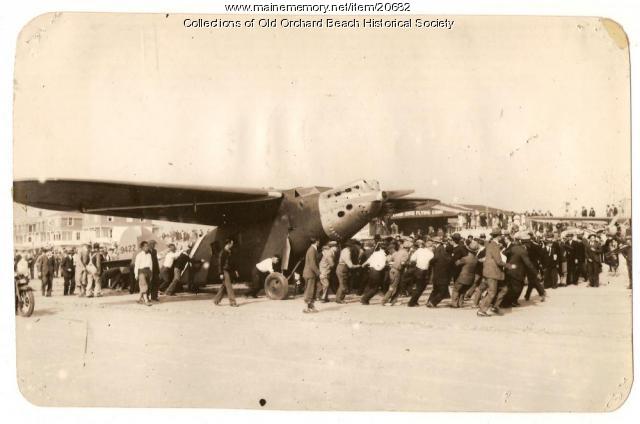Keywords: Warren
Item 25154
Warren Mills, Warren, ca. 1910
Contributed by: Seashore Trolley Museum Date: circa 1910 Location: Warren Media: Postcard
Item 15628
Contributed by: Davistown Museum Date: circa 1856 Location: Warren Media: Cast steel, wood, brass
Item 62054
26 Warren Avenue, Portland, 1924
Owner in 1924: Southworth Machine Company Use: Offices
Item 83282
380 Warren Avenue, Portland, 1924
Owner in 1924: Camillo Aceto Use: Store
Item 150317
Sketch for House for John Warren, Esq., Westbrook, 1881
Contributed by: Maine Historical Society Date: 1881 Location: Westbrook Client: John Warren Architect: Fassett & Stevens Architects
Item 151242
Thorndike residence, Brookline, Massachusetts, 1998-2006
Contributed by: Maine Historical Society Date: 1998–2006 Location: Brookline, MA Client: Alexander Thorndike, Architect: Patrick Chasse
Exhibit
Settlers' clothing had to be durable and practical to hold up against hard work and winters. From the 1700s to the mid 1800s, the women of Maine learned to sew by making samplers.
Exhibit
Several Mainers have run for president or vice president, a number of presidents, past presidents, and future presidents have had ties to the state or visited here, and, during campaign season, many presidential candidates and their family members have brought their campaigns to Maine.
Site Page
Old Orchard Beach Historical Society
View collections, facts, and contact information for this Contributing Partner.
Site Page
Thomaston: The Town that Went to Sea - Prison leaves Thomaston - 2002
"… facility was built in the neighboring town of Warren, and prisoners were moved there in February 2002."
Story
Daniel Porter's Story
by Daniel Porter
The author combines a personal reflection on his time incarcerated with a creative short story.
Story
My career as a chemical engineer for S.D. Warren Paper Company
by Charles Dodge
I worked in S.D. Warren's laboratory, and developed paper coatings, like Ultracast technology
Lesson Plan
Longfellow Studies: The Birth of An American Hero in "Paul Revere's Ride"
Grade Level: 9-12
Content Area: English Language Arts, Social Studies
The period of American history just prior to the Civil War required a mythology that would celebrate the strength of the individual, while fostering a sense of Nationalism. Longfellow saw Nationalism as a driving force, particularly important during this period and set out in his poem, "Paul Revere's Ride" to arm the people with the necessary ideology to face the oncoming hardships. "Paul Revere's Ride" was perfectly suited for such an age and is responsible for embedding in the American consciousness a sense of the cultural identity that was born during this defining period in American History.
It is Longfellow's interpretation and not the actual event that became what Dana Gioia terms "a timeless emblem of American courage and independence."
Gioia credits the poem's perseverance to the ease of the poem's presentation and subject matter. "Paul Revere's Ride" takes a complicated historical incident embedded in the politics of Revolutionary America and retells it with narrative clarity, emotional power, and masterful pacing,"(2).
Although there have been several movements to debunk "Paul Revere's Ride," due to its lack of historical accuracy, the poem has remained very much alive in our national consciousness. Warren Harding, president during the fashionable reign of debunk criticism, perhaps said it best when he remarked, "An iconoclastic American said there never was a ride by Paul Revere. Somebody made the ride, and stirred the minutemen in the colonies to fight the battle of Lexington, which was the beginning of independence in the new Republic of America. I love the story of Paul Revere, whether he rode or not" (Fischer 337). Thus, "despite every well-intentioned effort to correct it historically, Revere's story is for all practical purposes the one Longfellow created for him," (Calhoun 261). It was what Paul Revere's Ride came to symbolize that was important, not the actual details of the ride itself.



















